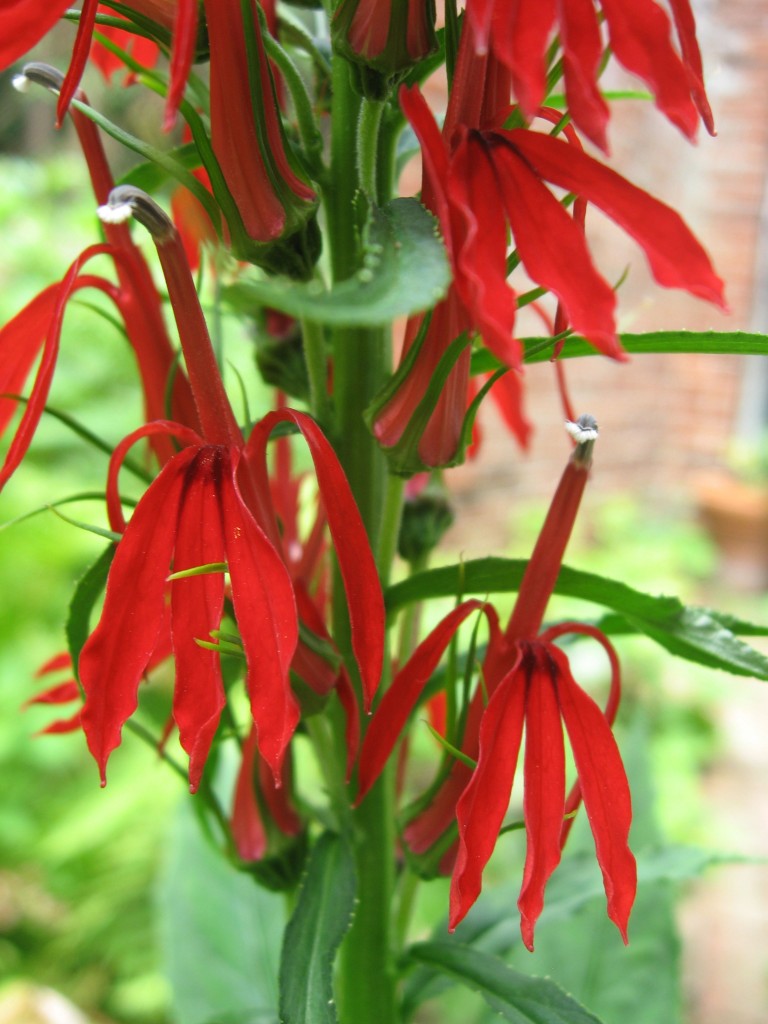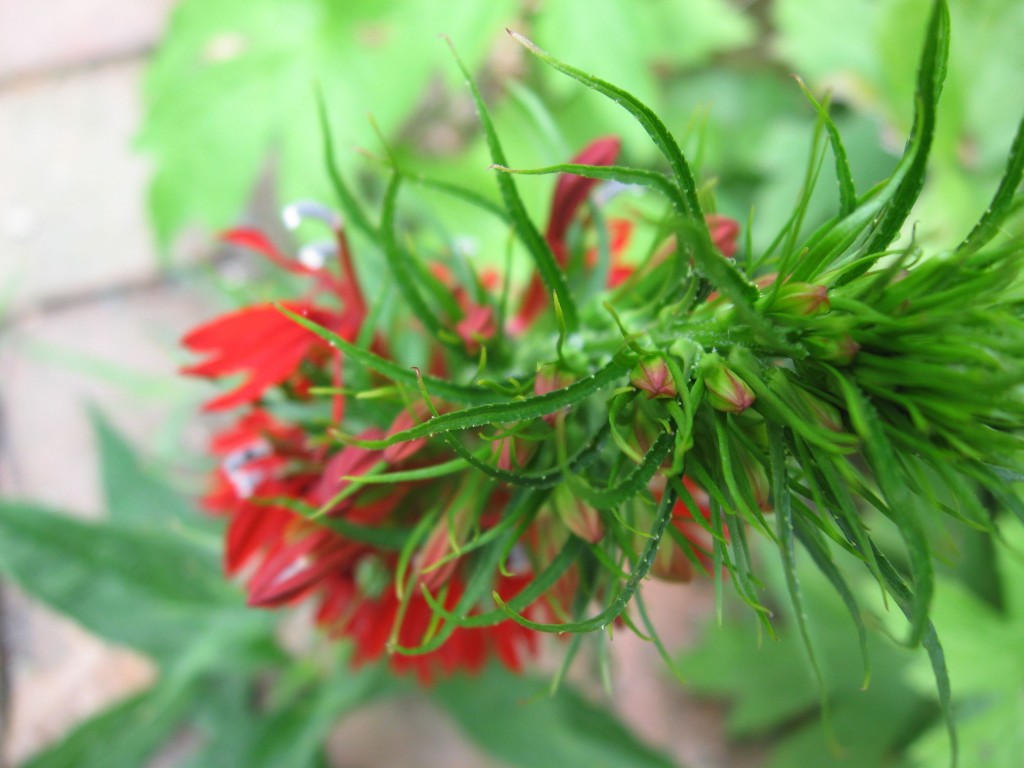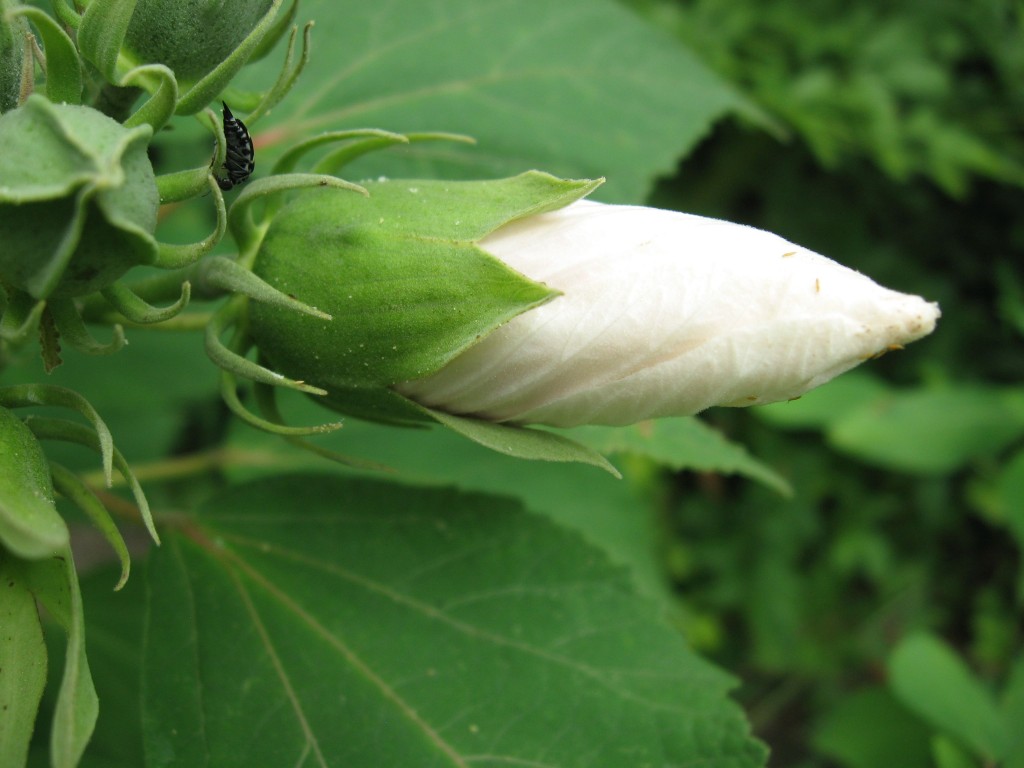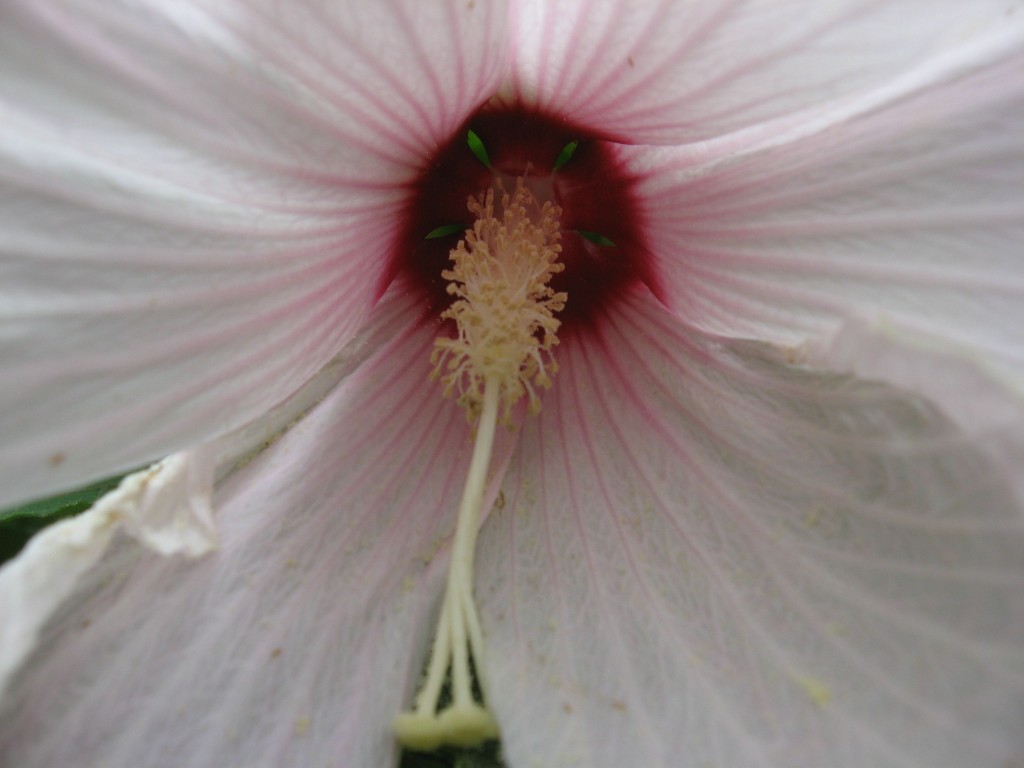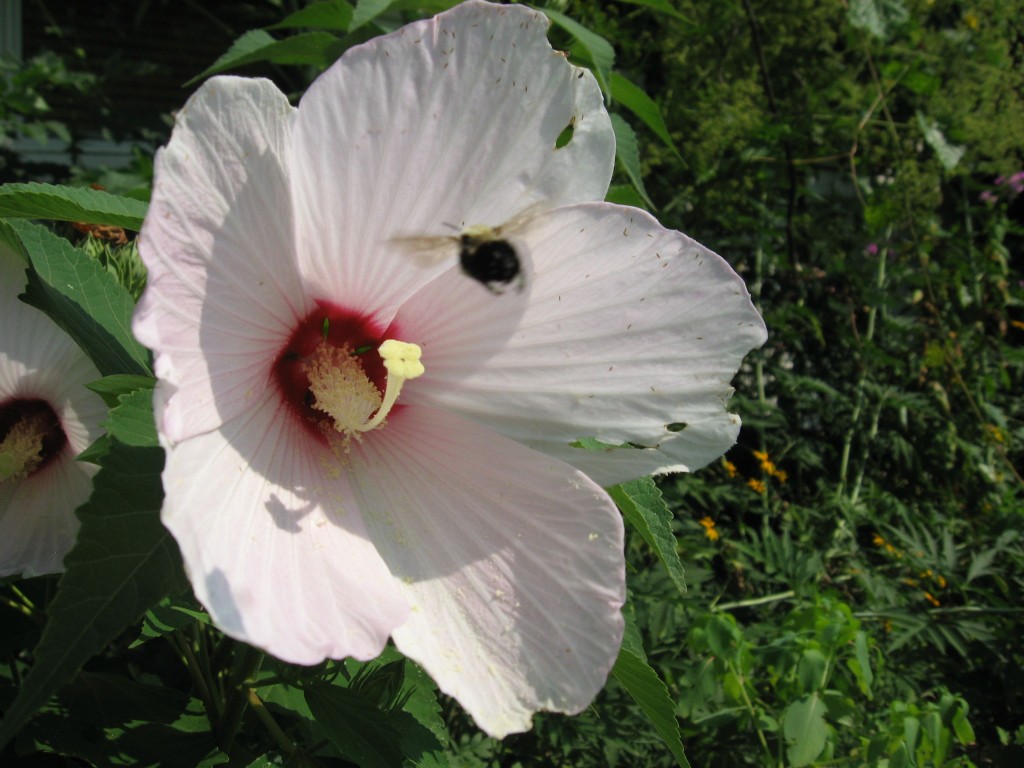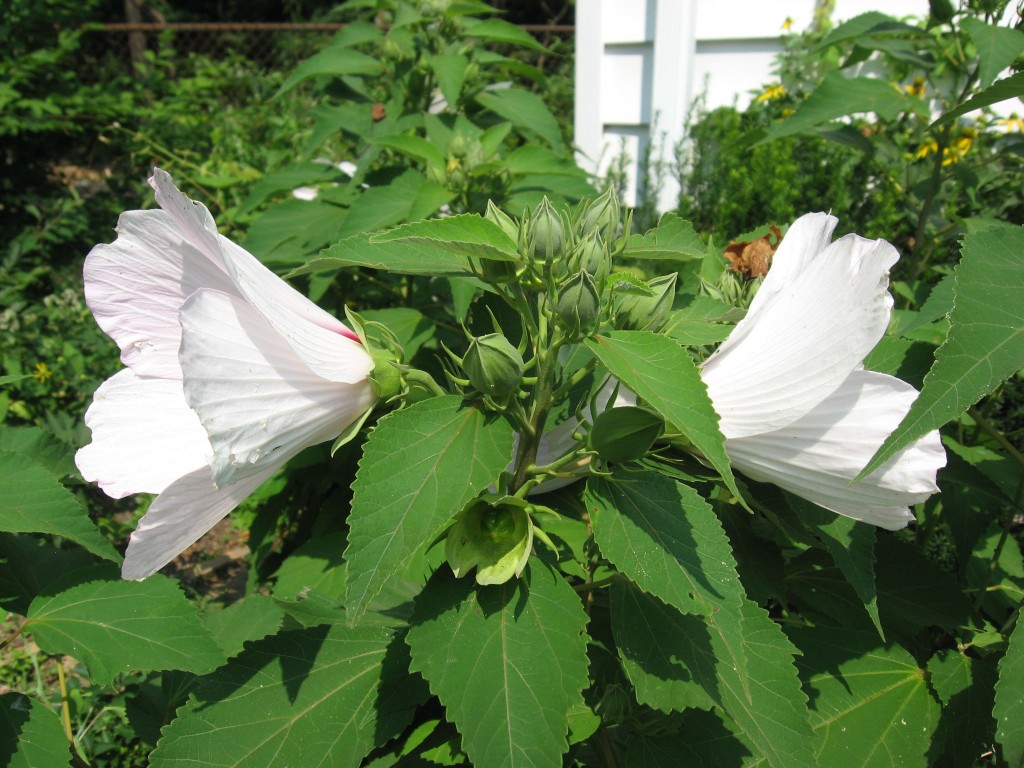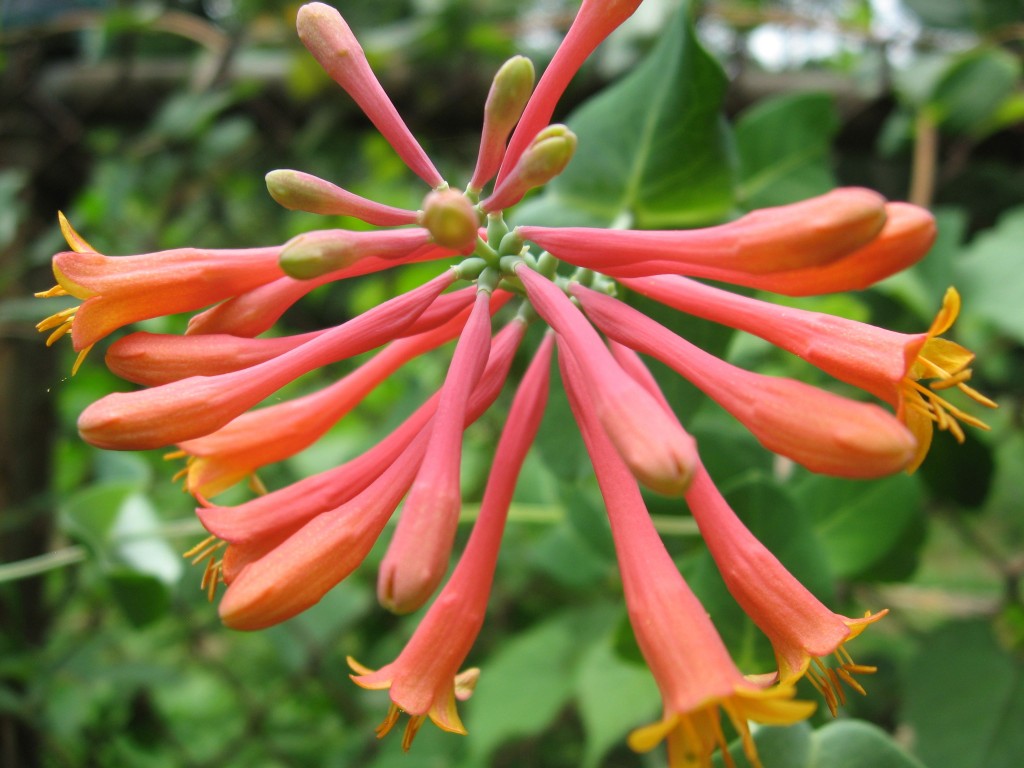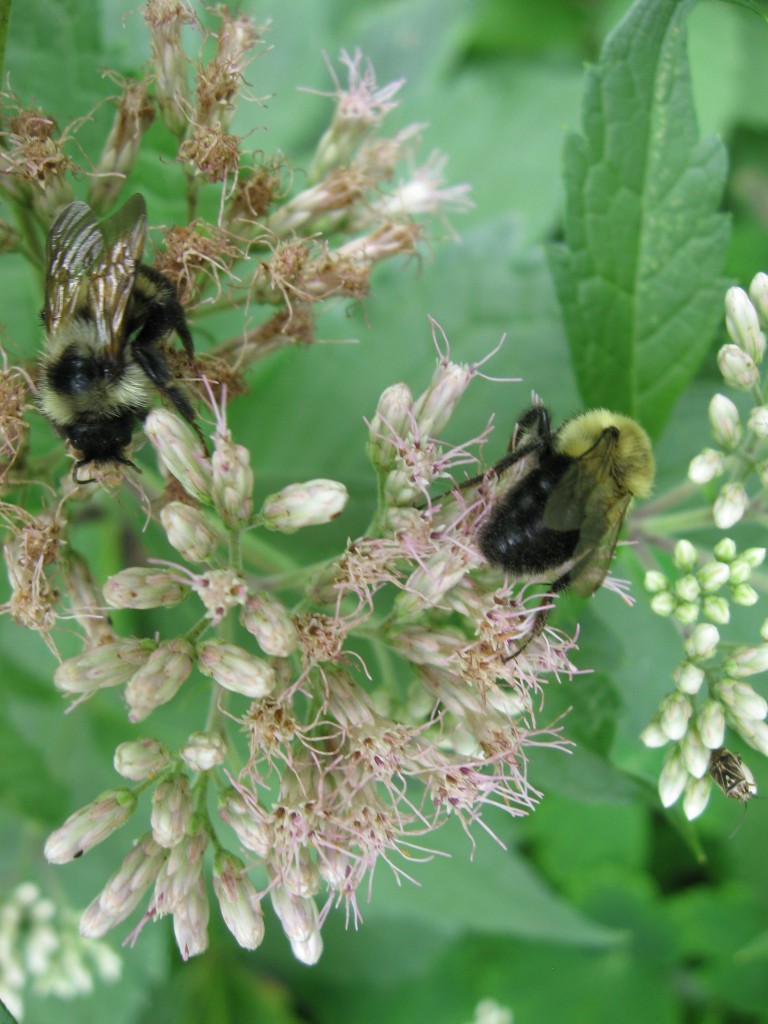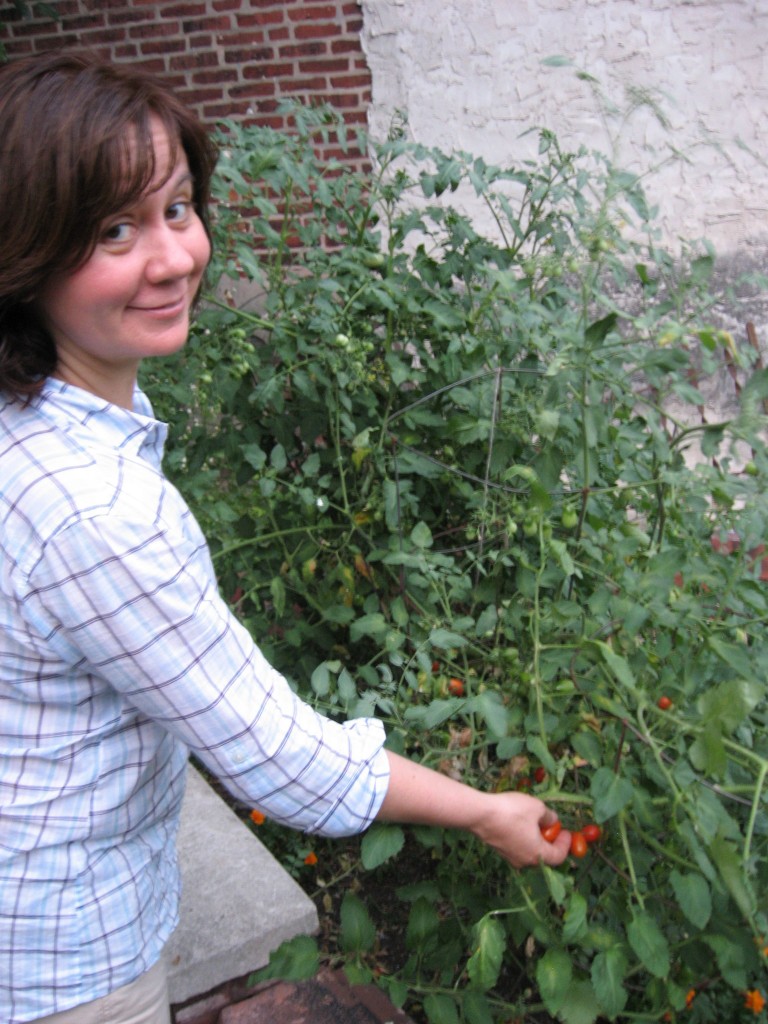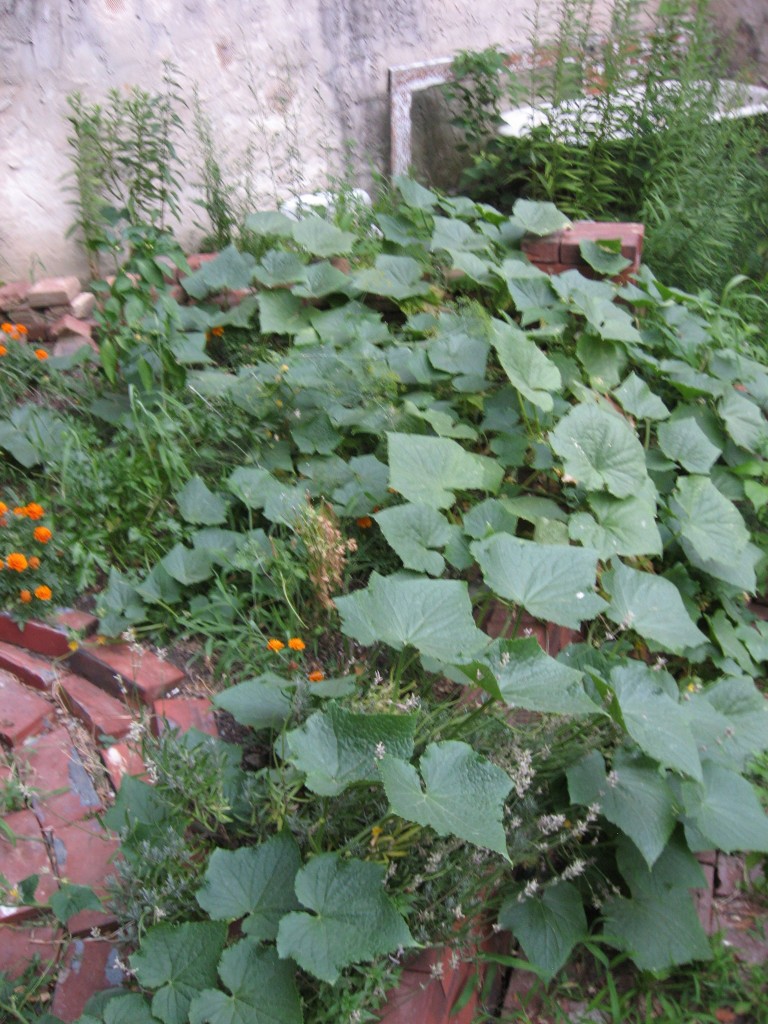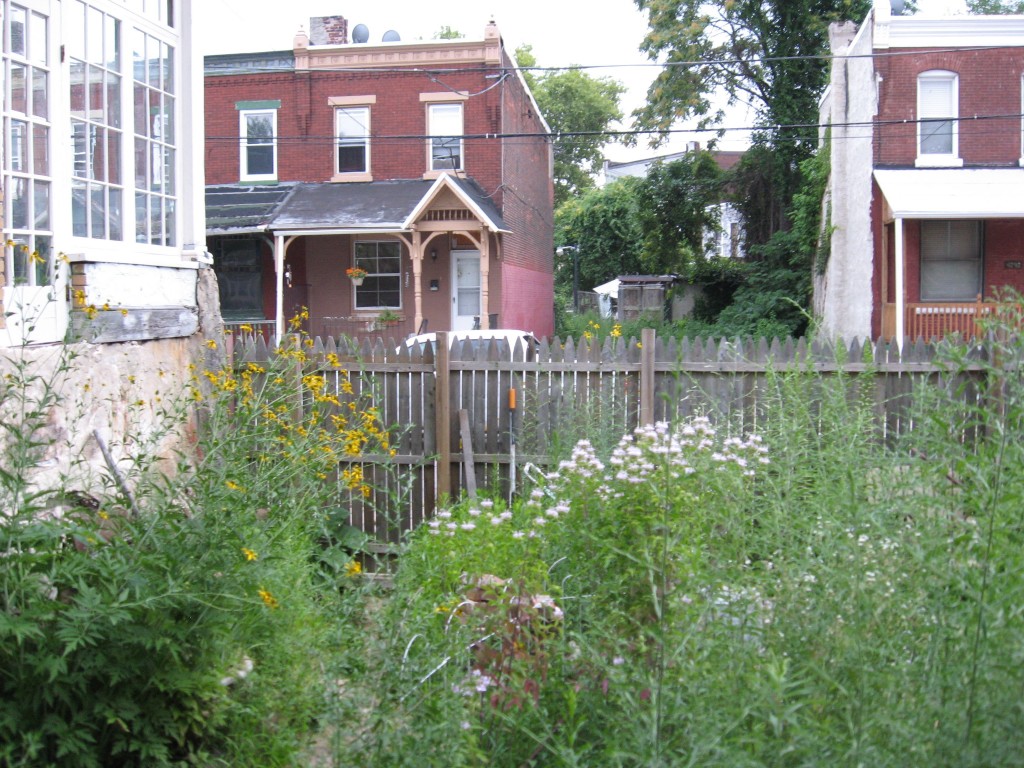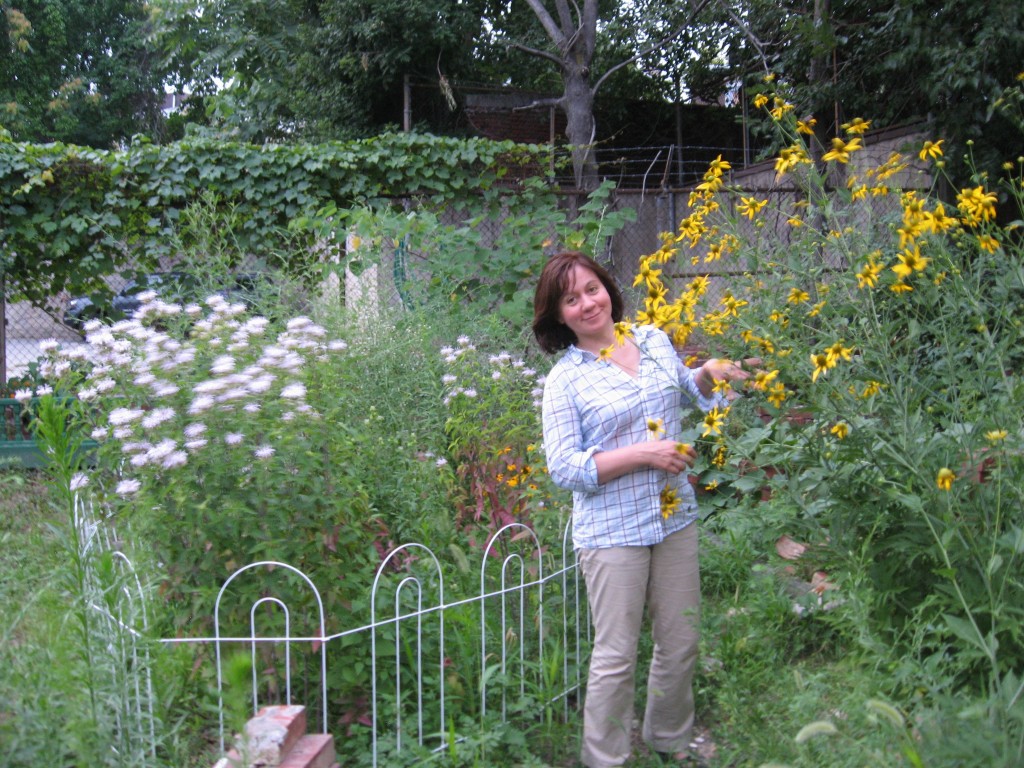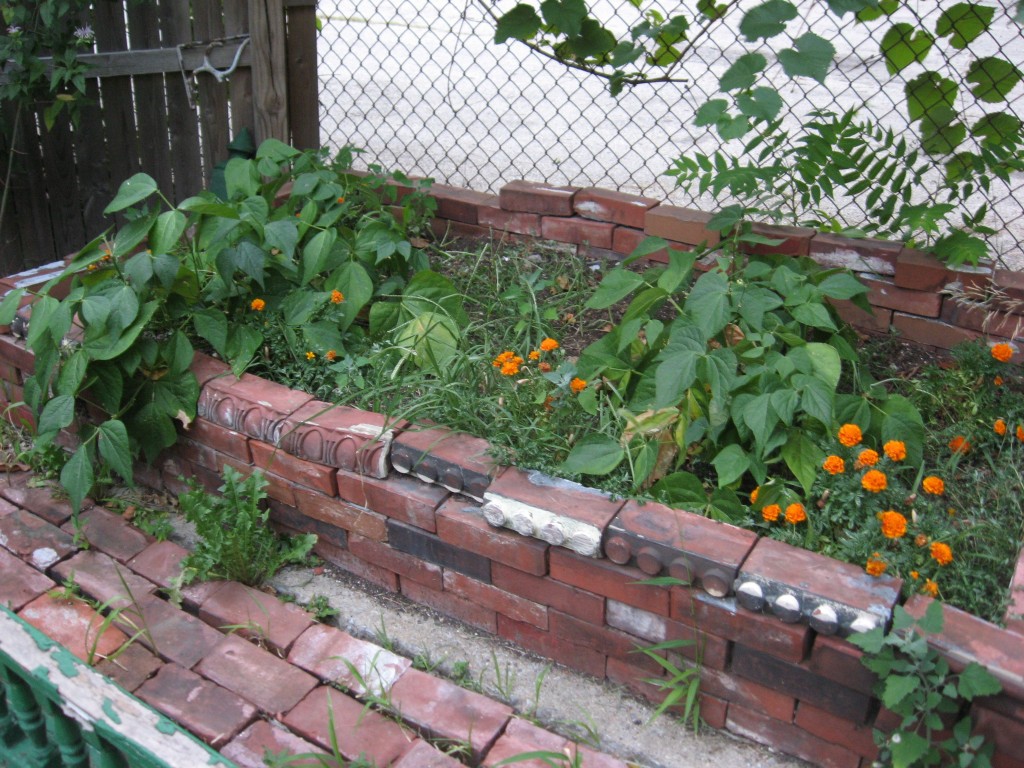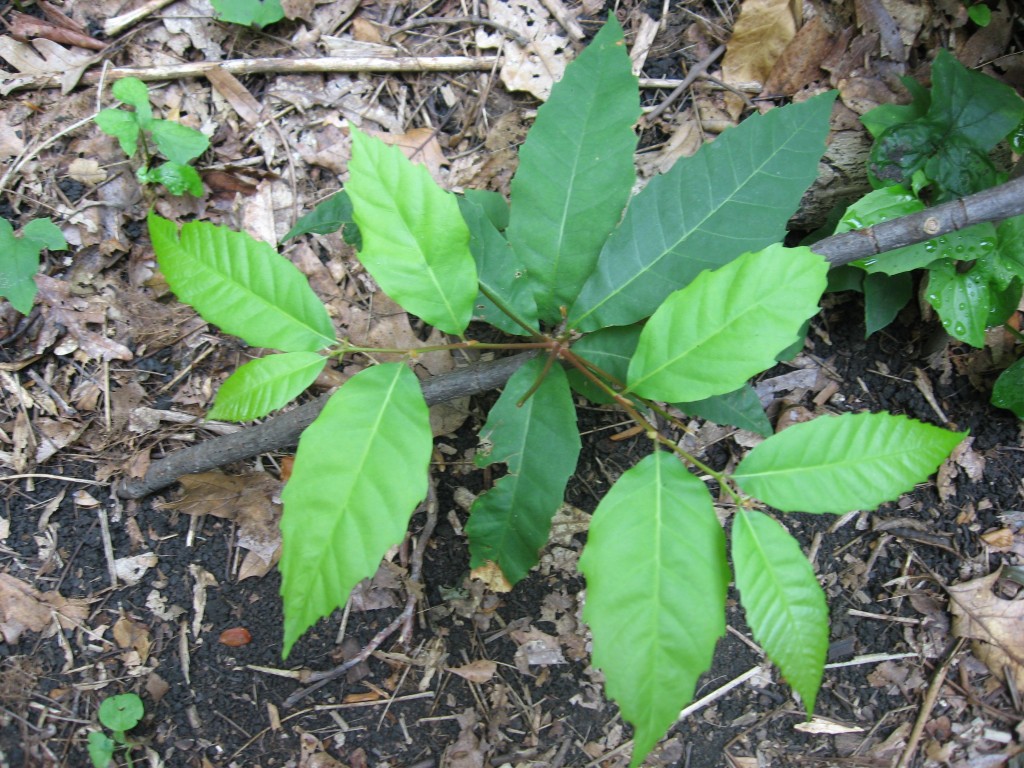
This seedling is good to see. After last year’s flowering and fruit production, we are not surprised to see a seedling of Castenea dentata growing below the blighted parents.  One of the parent trees of this youthful and vigorous seedling arrived this spring as a ghost, a multi-branched silhouette  of what it once was.  The Chestnut blight had destroyed the tree.  Its roots were able to push out more sprouts and the being itself is still alive.
For the time being this seedling is completely healthy, and may remain so for a few years to come. It is good  that the American Chestnut trees in Morris Park are still functioning reproductively; they flower, fruit and drop seed.  The seed is viable and is sprouting.
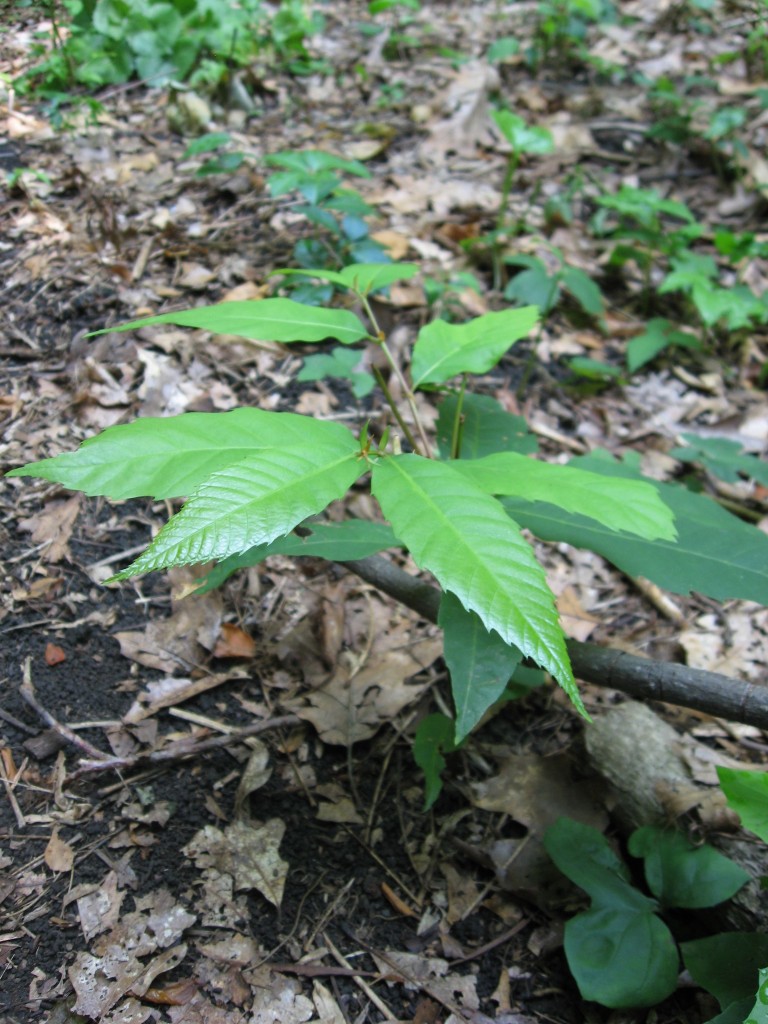
This section of Morris Park has for the most part, been left undisturbed. Enough so that the Chestnut trees are still intact. Many advancing introduced and invasive species are now growing amidst the Chestnuts.  Ailanthus altissima,  The Tree of heaven, Aralia elata,  the Japanese Angelica Tree are within a few feet of this seedling.  If we are not here to control these invasives, what will this forest be like in 20 years?  These invasive trees are aggressive invaders. Mature specimens throw out thousands of seeds every year, all the while sending out a vast, dense network of suckering roots that cover large areas of forest.  The resulting trees crowd out the natives and create dense shade.
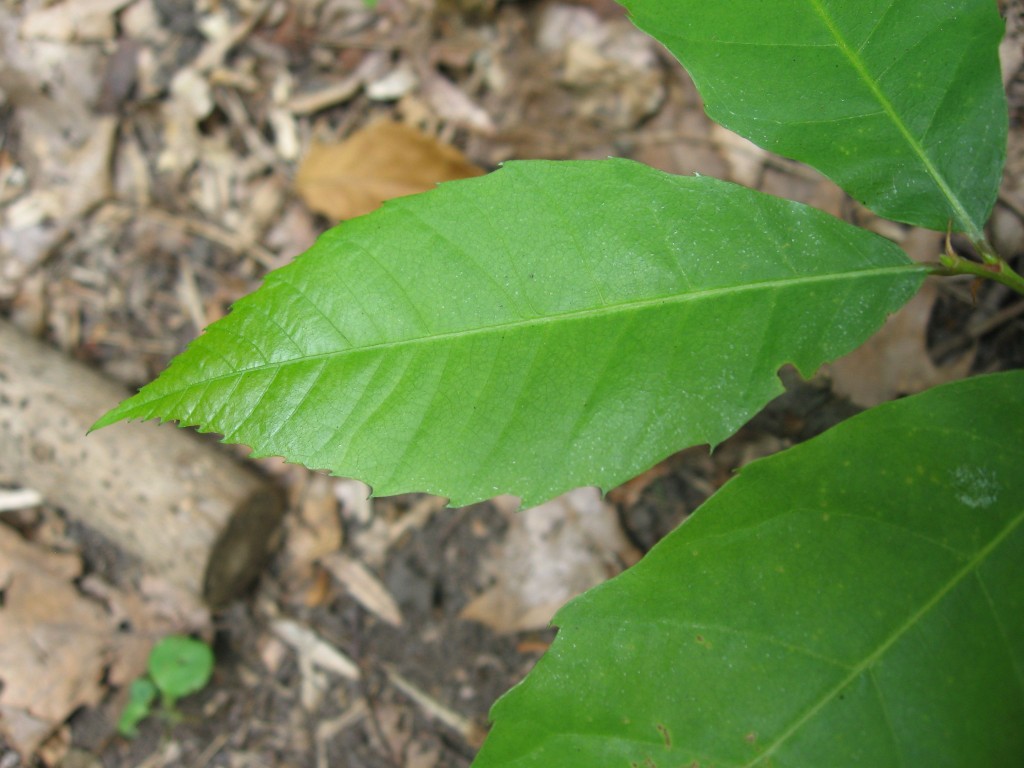
There was a dense cluster of the invasive exotic Japanese Angelica tree growing in the exact spot of this Chestnut seedling. Â Early this year, an effort was made to control this invasive tree and there was a resulting change in the light conditions on the ground. Â Perhaps the sprouting and growth of this seedling can be attributed to the changed conditions of light in the area?



